Who is Muriel Spark and why should we care about her? The provocative, slippery Spark might have asked us the same question. Muriel Spark has been cast as a spinner of comic, cold-blooded tales. On the level of pure fun, that’s not so far off. But Spark’s work is far more complex than it appears.
New Directions has reissued 8 of her 22 novels and brought out Spark’s first essay collection, The Informed Air. The essays, which range from the erudite to the delightfully oddball, are a good measure of Spark’s quirky range. They also reveal why it’s so impossible to fit Spark into a box. She’s an independent thinker. Asked to write an essay on eyes, she waxes on the transcendent function of noses, which is “to proclaim humankind.” It’s useful to read Spark’s essays alongside her novels, because her hardboiled plots can make her seem steely and unforgiving. Her probing essays on faith and her lyrical pensées prove that she is anything but.
Figuring out what excites Spark is a better approach than figuring out what she was trying to tell us. In short, what enthralled her was Roman Catholicism. She converted in 1954, when she was 36 years old, disillusioned and hooked on Dexadrine—speed. For more than a decade, her life had been fraught. In 1937, she followed her lover to Rhodesia and married him, but he turned out to be demented and abusive. Spark decamped with their son and patchworked a life out of secretarial work. In 1944, at her wit’s end, she put her son in a convent school in Africa, hoping for the best, and fled for London. (Spark sent for him after the war, then promptly shipped him off to her parents.)
More bitterness awaited. Spark found secretarial work at the Foreign Office with the great propagandist Sefton Delmer. (Perhaps fatefully, for her novels, she was organizing deceit.) But the job ended after six months, and years of financial struggle followed. 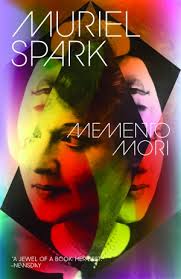 Finally Spark landed an ace post running the Poetry Society in 1947. But she got fired acrimoniously in 1948. She started writing criticism and editing books, developing her skills as a poet and thinker. She had been writing about T.S. Eliot and the Book of Job, and was baptized as an Anglo-Catholic in 1952. But then there was the speed. By 1953 she was malnourished and the speed had induced a kind of psychosis. She grew obsessed with T.S. Eliot’s play The Confidential Clerk and believed there were secret, threatening codes in it. But when she started reading the 19th century cardinal John Henry Newman, everything changed.
Finally Spark landed an ace post running the Poetry Society in 1947. But she got fired acrimoniously in 1948. She started writing criticism and editing books, developing her skills as a poet and thinker. She had been writing about T.S. Eliot and the Book of Job, and was baptized as an Anglo-Catholic in 1952. But then there was the speed. By 1953 she was malnourished and the speed had induced a kind of psychosis. She grew obsessed with T.S. Eliot’s play The Confidential Clerk and believed there were secret, threatening codes in it. But when she started reading the 19th century cardinal John Henry Newman, everything changed.
Newman turned Spark on to Roman Catholicism. Just as he left the Church of England for Rome, so did Spark. She read him voraciously and edited his letters. When she moved into a new flat in London, in 1953, says her biographer Martin Stannard, “[s]he bought a kettle, a chest of drawers, a Catholic prayer book, and 13 volumes of Newman.” The Edinburgh-born Spark had a half-Jewish father and a Presbyterian English mother, so to some extent her faith was fluid. She seems to have found, in Newman’s writings, something genuine. No doubt after years of misery, a rational and kind voice would be irresistible. Newman gave her answers.
Spark’s relationship to Newman is key to understanding her literary motives. Because only after she converted did Spark start writing novels. Catholicism was the framework within which Spark could assess the anomalies of character and action, and the misguided ways in which people seek to shape their lives. Spark published her first book, The Comforters, in 1957, when she was 39 years old—four years after her conversion. She is not a psychological novelist. She is not interested in character development. Instead, she choreographs her tales around insular, hermetic communities: a nursing home, a wartime hostel for women, a convent, an expat enclave in Africa, a schmaltzy publishing house. In these little environments she can lay bare her characters’ generally atrocious conduct. But however ruthless she appears on the surface, Spark was deeply tuned into human suffering.
Her capacity to probe, and to expose our moral failings—while innovating around the form of the novel—is what makes her so relevant now. Questions of conduct, doubt, falseness, compassion, original sin, deceit, destiny, and suffering inhabit all of Spark’s fiction. But the way she folds moral concerns into her scenarios is novel. She breathed new life into prose, and broke with convention. Spark was a wit: satirical, 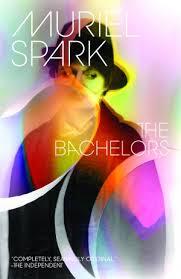 acerbic, smart-alecky, mordantly funny. Her plots are dark and her tone sassy. She experimented with narration, inserting herself into a story where she pleased and jump-cutting around chronologically. This was not entirely new for mid-century writers, but it was daring for the time. Her narrators intrude into the story or give away the ending from the get-go. “Happiness or unhappiness in endings is irrelevant. The main thing about a story is that it should end well,” she said, observing that “a story’s ending casts its voice, colour, tone and shade over the whole work.” She had no qualms giving the plot away, either—it creates suspense, she said. In The Driver’s Seat (1970), a novella about a woman named Lise who is planning her own murder, the effect is harrowing:
acerbic, smart-alecky, mordantly funny. Her plots are dark and her tone sassy. She experimented with narration, inserting herself into a story where she pleased and jump-cutting around chronologically. This was not entirely new for mid-century writers, but it was daring for the time. Her narrators intrude into the story or give away the ending from the get-go. “Happiness or unhappiness in endings is irrelevant. The main thing about a story is that it should end well,” she said, observing that “a story’s ending casts its voice, colour, tone and shade over the whole work.” She had no qualms giving the plot away, either—it creates suspense, she said. In The Driver’s Seat (1970), a novella about a woman named Lise who is planning her own murder, the effect is harrowing:
She will be found tomorrow morning dead from multiple stab-wounds, her wrists bound with a silk scarf and her ankles bound with a man’s necktie, in the grounds of an empty villa, in a park of the foreign city to which she is travelling on the flight now boarding at Gate 14.
Then Spark feeds you clues: Lise is looking for a man who’s her type, she marks a spot on a map, she nonchalantly leaves her passport in a taxi, she buys a paper-knife. Eventually, horrifyingly, you realize that Lise is looking for a murderer. But what is Spark telling us? That this character, unlike most of Spark’s female characters, is calling the shots because she decides on the time and place and circumstances of her murder? Or is she telling us that all men murder—or want to? Significantly, Spark upended how a woman writes about women. She cut her female characters apart, often literally, but she was not unsympathetic. Neither being a character who is feminist nor being a feminine woman gets you anywhere with Spark, a sign not that Spark didn’t care but that she cared quite a lot. She wanted us to read between the lines.
Spark didn’t want to be seen as a woman writer. “I quite like to think that my writing belongs to no particular sex,” she said in an interview. Spark was writing inside a particular moment in time that existed for women. It was opened up by Virginia Woolf, Ivy Compton-Burnett, and Elizabeth Bowen, but it lacked the constraints of social responsibility that feminism devoted itself to. Spark was a woman writing independently, without male influence and without feminist accountability.
Spark’s first book established her reputation. By the third, she hit her stride. Her themes and methods coalesce beautifully in Memento Mori (1959), her comic masterpiece about the shenanigans of a community of vital, calculating elderly people, a dozen of whom are living out their days in a nursing home. Its artificial whodunit plot in the style of Agatha Christie is Spark’s calling card. But, cunningly, Spark sets this stylized tale of intrigue, blackmail, and murder against the more mundane humiliations of old age. The action hinges on a brilliant gimmick, a series of macabre phone calls to the elderly: “Remember you must die,” the caller warns. The way each person responds to the call reveals a lot. “I consider it a great pity that flogging has been abolished,” huffs Dame Lettie, who later gets the axe. The call seems less about death than it is a reminder about how to conduct yourself in life.
Its artificial whodunit plot in the style of Agatha Christie is Spark’s calling card. But, cunningly, Spark sets this stylized tale of intrigue, blackmail, and murder against the more mundane humiliations of old age. The action hinges on a brilliant gimmick, a series of macabre phone calls to the elderly: “Remember you must die,” the caller warns. The way each person responds to the call reveals a lot. “I consider it a great pity that flogging has been abolished,” huffs Dame Lettie, who later gets the axe. The call seems less about death than it is a reminder about how to conduct yourself in life.
Spark riffs off the stichomythic, dialogue-driven style of Ivy Compton-Burnett, whom she admired. Jaunty, hardboiled conversations are the engine of Memento Mori. This is hilariously the case in this conversation between Godfrey and his spiteful son Eric, who’s teaming up with Mrs. Pettigrew to blackmail his father:
“Mrs. Pettigrew and I are in this together, father.”
“In what?”
“The question of the new will. And in the meantime, I expect to be remunerated according to the situation.”
“You’re growing a paunch,” said Godfrey.
“I haven’t got a paunch.”
In Memento Mori, no one gives a hoot about anyone else and every character comes up short on virtues.
Spark wasn’t writing traditional, finished novels as much as she was setting people up to act against and in response to one another. This style is an efficient way for Spark to stage-manage mysterious or duplicitous human behavior. And she does it with a light touch, setting out sin, disingenuousness, and other moral failings for us to contemplate, leaving the puzzle pieces scattered around the table. By showing us the mess that her characters—well-intentioned or not—make of things, she’s showing the difference between what life is and what we make of it. And what’s implied with so much open-endedness and reading between the lines is Spark’s theological attitude: We are not omniscient, but God is. Her relationship with the reader is crucial here; it is us, not Spark’s characters, whom she’s keen on converting.
Those who see Spark as a ruthless writer have not paid close enough attention to Memento Mori. Because no matter how despicably people act, Spark empathizes with their suffering: “The arthritic pain subsided, leaving the pain of desolate humiliation, so that she wished rather to endure the physical nagging again,” says Granny Taylor after getting an injection.
When she was a girl, Spark visited elderly family friends in hospitals. Impressed by their power and persistence, she wrote Memento Mori in response. “They were paralysed or crippled in body, yet were still exerting characteristic influences on those around them and in the world 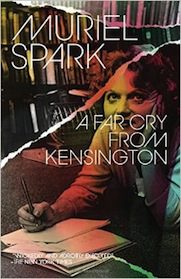 outside. I saw a tragic side to this situation and a comic side as well,” Spark said. She took the time to give Memento Mori’s elderly characters agency rather than letting them be people who are merely acted on by time and the world, which is already on the way to forgetting them.
outside. I saw a tragic side to this situation and a comic side as well,” Spark said. She took the time to give Memento Mori’s elderly characters agency rather than letting them be people who are merely acted on by time and the world, which is already on the way to forgetting them.
Memento Mori is as mordant as any Spark novel gets, and frankly, I think it couldn’t be more tender. “A good life doesn’t reside in the dignity of bearing but in the disposition of the soul,” says Mrs. Taylor to Alec, a high-minded snoop. “He contemplated Old Age,” Spark jibes. Alec is a gerontologist who is compiling case histories on the elderly and, like so many of Spark’s inauthentic or superficially Catholic characters, he’s reading Newman. He has the gall to tell Mrs. Taylor that he likes to know “whether a death is a good or bad one.” It’s divine judgment, not Alec’s human judgment, that counts.
In a Spark novel, anyone writing a memoir is suspect. In book after book, she holds her characters’ self-aggrandizing autobiographies up against the facts. Who are we? It’s a theological question that Spark grappled with herself, and a question that continues to be relevant to Spark readers—with or without the Catholic slant. She put all that tension between personal failure and grand possibilities into her fiction. It’s a risky move to create characters who forever fail to live up to their possibilities. But Spark was brazen. She understood failure all too clearly from her unhappy years in Africa, her disappointment over her marriage, her betrayal by her lover and poet-collaborator Derek Stanford, her years-long custody battle for her son and her estrangement from him, her financial straits, and the vitriol she encountered at the Poetry Society. While she was wildly successful in her later life, her twenties and thirties were desperately unhappy and searching. Possibility lay in studying theology—in particular the teachings of Newman—and finally in conversion. After that, she said, things just starting working.
Memento Mori, Loitering with Intent, The Prime of Miss Jean Brodie, and The Girls of Slender Means are her most powerful attempts to weigh our moral and worldly failings against the many possibilities we might fulfill. Nowhere in Spark’s oeuvre are these extremes of self-image—and their inevitable and muddy overlap—explored more hilariously than in the screwball comedy, Loitering with Intent (1981).
In this farce about literary ambition and false piety set in 1949-50, the protagonist Fleur Talbot, a budding novelist, gets a job as a secretary at a London publishing house while she finishes her novel—a potboiler about a villain named Warrander Chase. Quentin, the publisher, is a disreputable jerk with a misogynist attitude: 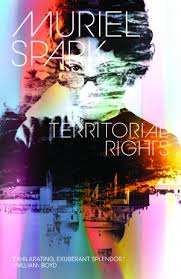 “An argumentative woman is like water coming through the roof; it says so in the Holy Scriptures, either Proverbs or Ecclesiastes, I forget which,” Quentin says stupidly.
“An argumentative woman is like water coming through the roof; it says so in the Holy Scriptures, either Proverbs or Ecclesiastes, I forget which,” Quentin says stupidly.
Quentin presides over an Autobiographical Association (AA), a sort of Meetup group for memoirists that he runs on the side. He runs it like a cult, giving his 10 followers Dexedrine to “enable them to endure the purifying fasts he inflicted.” They never get beyond the first chapter. False prophet Quentin is driven by charity (always a suspect motive in Spark) and a need to be admired. Cardinal Newman has followers, so why not Quentin? He asks Fleur to jazz up their autobiographies. Soon Fleur’s novel begins to foreshadow real life. Warrander is Quentin’s doppelgänger. Like Quentin, his hobby is collecting people for their weakness and folly so he can load them up with guilt. “He goaded with the Word of God and terrorized,” Fleur says.
Spark was never an “obedient” Catholic. She was full of doubt even after she converted. She openly criticized the church, believing that God, not the church, was the divine authority. She excoriated others for their false piety. Spark put this impatience into her fiction, creating hypocrite-poseurs like Quentin and Fleur’s friend Dottie, a Catholic “addicted to the cult of the Virgin Mary.” (Fleur is sleeping with Dottie’s bisexual husband.) Dottie steals Fleur’s manuscript so Quentin can spice up his acolytes’ life stories with Fleur’s sensationalist scenes. He believes the completed works with be useful for historians and will “set the Thames on fire.” But Fleur’s no angel either. She borrows from Quentin’s and others’ lives for her potboiler, steals her manuscript back by turning Quentin’s mother against him, and blackmails Quentin. “But that day in the middle of the twentieth century I felt more than ever how good it was to be a woman and an artist there and then,” Fleur says. She’s sneaky but forgivable because she’s an independent woman and an artist. She’s after the truth.
Spark wasn’t after the truth. She might have been after the facts so she could get closer to sincerity. In her essay “Newman’s Journals,” she quotes Newman saying he felt his book was one long complaint, “but it represents what has been the real state of my mind.” So perhaps Spark is not critiquing characters like Quentin, Dottie, and Fleur, but exposing their flaws to help us see beyond what’s obvious. Perhaps, too, she’s telling us that autobiography is not a guide to what’s accurate as much as it is a guide to what people find meaningful.
Facts are one approach, says Spark in her 1950 pensée, Biography. But facts can present a distorted picture when things are complex, she says. Imagination rampaging across history is another approach, she says. It hits home beautifully, then, that Fleur is reading not just 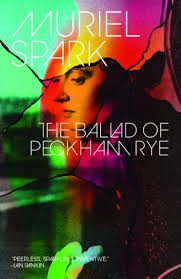 Newman’s treatises on being a genuine person but also Benvenuto Cellini’s swashbuckling romp. Isn’t any life story, Spark seems to be saying, a little bit Newman, a little bit Cellini?
Newman’s treatises on being a genuine person but also Benvenuto Cellini’s swashbuckling romp. Isn’t any life story, Spark seems to be saying, a little bit Newman, a little bit Cellini?
For her autobiography, Curriculum Vitae, Spark researched the facts. Furriers were paid in guineas and the best herring came from Loch Fyne. She refracted her experiences through her memories of doorbells and butter, but she also wrote clearly about her grandmother’s illness and her propaganda work at the Foreign Office. As you puzzle together a picture of your life, memories shift. Perhaps you take a wish and insert it wholesale. Maybe you misremember what’s accurate and steer toward what you longed for. Could Spark’s family afford the most expensive herring in Edinburgh? “All day, the flying fish leapt like ballet dancers,” she said of her sea voyage to Cape Town. Is that what it was like? Probably not. But that’s what her excitement felt like.
Fleur was one of Spark’s two greatest heroines. The other is Jean Brodie. They are both women who break the rules. They also happen to be two major characters who do not get killed. Spark took them seriously as characters, casting men in the roles of unethical boobs or murderers. So why, in Spark, are women violently, senselessly murdered in The Go-Away Bird, Portobello Road, The Ballad of Peckham Rye, The Driver’s Seat, The Girls of Slender Means, Memento Mori, and The Comforters?
“I just feel that life is cruel,” Spark said in a 2005 interview. “You take that away, it’s like taking away something very vital. Newman wrote somewhere that it is impossible to write a novel without the factor of evil,” she said. Suffering colored all her work. “I could never quite leave the Book of Job alone, and it would never leave me alone,” Spark said in a 1984 essay, “The Only Problem.”
What Spark’s hermetic, artificial worlds show us is what evil looks like on a human scale. In The Prime of Miss Jean Brodie (1961) and The Girls of Slender Means (1963), Spark creates ideal little women’s-only societies, puts them on pedestals, and watches them crumble. Jean Brodie takes place in a girls’ school and Slender Means in a female boarding house. On the surface, these two novels are critiques of selfish behavior and shallow people set against Europe’s suffering and demise. But they are also conversion stories. More than any other Spark tales, Jean Brodie and Slender Means passionately explore the circumstances of what it means to be a woman in that mid-century moment. In that they are cautionary tales, or stories of self-transformation in a society that was still hostile to women, Jean Brodie and Slender Means are fundamental to understanding Spark’s feminism.
Spark’s idiosyncratic 1950s feminism, Stannard observed, was closer to that of the 1990s. “Feminism for Muriel began and ended with the claim for economic equality. Once that was achieved, she required no favors.” Fair enough. Problematically, though, Stannard adds: “She made no apology for loving designer dresses, jewelry, poise, charm.” Is it anti-feminist to want to look ravishing or be in command? But Stannard is right: Spark’s feminism was looked at askance. It still is. To me, the issue seems to be not whether Spark was a feminist, 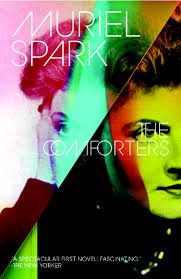 because her characters and obsessions clearly reveal it to be so, but whether she had a feminist style. Spark was a broad. Feminists are still perceived as women who wear pants.
because her characters and obsessions clearly reveal it to be so, but whether she had a feminist style. Spark was a broad. Feminists are still perceived as women who wear pants.
Jean Brodie is the character that made Spark famous enough to buy all those designer dresses. Set in the 1930s, The Prime of Miss Jean Brodie tells the story of an eccentric, war-widowed teacher at a Scottish girl’s school. “I am putting old heads on young shoulders,” asserts Brodie, who takes six students under her wing and gives them an unsentimental education. Spark modeled her after Christina Kay, whom she met when she was 11 at the James Gillespie School for Girls in Edinburgh. Kay was an experimental teacher who separated students according to signs of the zodiac, took them to the theater, and raved about Latin roots. She inspired feminist resolve in daily life, too: “She told us of the day she had to go and query a bill at the Edinburgh gas office. Our class of girls, incipient feminists, was totally enthralled by Miss Kay’s account of how the clerks tittered and nudged each other: a female desiring to discuss the details of a gas bill!”
Spark created a wackier, lustier, and more self-indulgent version of Kay in Jean Brodie. Brodie embodied a woman in a muddled kind of self-transformation. If John Stuart Mill can learn Greek at age five, Brodie says, then there’s nothing she shouldn’t be able to do in her prime. This is a jab at the “intrusion” of Calvinist ideas that the headmaster and her cronies teach—for Brodie, education is a “leading out” into knowledge. Calvinism values obedience, chastised Mill in On Liberty, and he weighed it against the alternatives, including the “Greek ideal of self-development.” Brodie misses the nuance, and makes the girls teach her Greek on Saturdays.
Brodie is a narcissist, but she means well. She takes the girls on field trips to a slum, to an unemployment line, and to see Anna Pavlova; she confides in them about her lover; and during sewing class she reads Jane Eyre to them while they prick their fingers to make blood-spot designs on the fabric. She encourages one girl to sleep with the art teacher and the other to be her informant. She underestimates her students by boiling their talents down to one thing only: Rose was famous for sex, Eunice for sports, Sandy for vowel sounds, and so on. But Brodie had spunk: “If authorities wanted to get rid of her she’d have to be assassinated.”
What’s important about Brodie is that she didn’t get what she wanted. She was artistic and sharp-witted, but also a repressed lesbian (say her students) and a Fascist. “There were legions of her kind during the nineteen-thirties, women from the age of thirty and upward, who crowded their war-bereaved spinsterhood with voyages of discovery into new ideas and energetic practices in art or social welfare, education 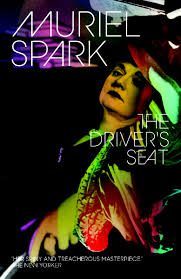 or religion,” Spark says. Brodie was a schoolteacher and not a suffragist. She did not fully embody the excitement of the age. But she could have.
or religion,” Spark says. Brodie was a schoolteacher and not a suffragist. She did not fully embody the excitement of the age. But she could have.
In a 1999 interview, Spark said that she saw the unrealized potential in people—“what they were or were not. That would be outside the pages.” Spark’s women had possibilities, even if they didn’t live up to them. “Who is the greatest Italian painter?” Brodie asks. Leonardo da Vinci, responds one student. “That is incorrect,” Brodie replies. “The answer is Giotto, he is my favorite.” Is Spark reminding us that women must learn to think for themselves? Probably. But while it’s true that Brodie asserts her individuality, she does it in a way that’s pathetically bald. Brodie’s lessons are about Brodie.
Now remember Spark’s Job obsession. Who are we to judge? Brodie is doing her best to make her way in the world of ideas. She takes classes in comparative religion at night, introducing her students to the idea that not everyone believes in God.
The quality of one’s faith is a theme in The Girls of Slender Means, too. Set in post-victory 1945, the novel is a farce about husband-hunting young women in a boarding house called the May of Teck Club. They lead silly lives while bombs destroy the city around them. The girls rub their butter rations on their skin so they can slip through the attic window and sunbathe on the roof. They like men who are good dancers. They share a Schiaparelli dress. They are “slender” in means but more so in spirit.
The story is told through a series of flashbacks to 1945, after Jane, a journalist and former Club member, hears that Nicholas Farringdon, an anarchist poet turned Catholic missionary who frequented the club, has been “martyred” in Haiti. She’s eager to find his old manuscript and publish it, in case his murder makes him famous. “It smells religious. He will finish up as a reactionary Catholic, to obey the Pope,” Jane predicted in 1945, when she first came across his manuscript.
Farringdon’s determination to “infiltrate” the club, and especially the gorgeous Selina, puts him in charge during the novel’s beautifully choreographed, slapstick denouement. At issue is the quality of his conversion, but also Selina’s cold-blooded act, 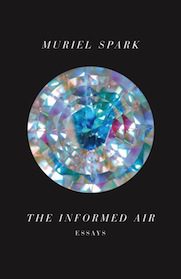 which triggers it. The house is on fire. A leftover German bomb had exploded in the garden. All the women squeeze, naked and buttered up, through the attic hatch to escape the burning house. Last out is Joanna Childe, a caricature of a good parish daughter with all the wrong ideas about love. She teaches elocution. Farringdon once recorded her reciting Gerard Manley Hopkins’s Wreck of the Deutschland, dedicated to nuns who, escaping religious persecution, perished in a shipwreck. Spark would have known that Hopkins converted because of Newman, whom he met at Oxford. But Farringdon converts not after a period of contemplation—like, say, Hopkins and Spark—but in response to Selina’s evil act. As the house is burning, Farringdon is on the roof, helping women out. Joanna, too fat to squeeze through the hatch, recites Psalms 126 and 127 (about rejoicing) to calm the others as they escape. And, alas: “The house sank into its centre, a high heap of rubble, and Joanna went with it.”
which triggers it. The house is on fire. A leftover German bomb had exploded in the garden. All the women squeeze, naked and buttered up, through the attic hatch to escape the burning house. Last out is Joanna Childe, a caricature of a good parish daughter with all the wrong ideas about love. She teaches elocution. Farringdon once recorded her reciting Gerard Manley Hopkins’s Wreck of the Deutschland, dedicated to nuns who, escaping religious persecution, perished in a shipwreck. Spark would have known that Hopkins converted because of Newman, whom he met at Oxford. But Farringdon converts not after a period of contemplation—like, say, Hopkins and Spark—but in response to Selina’s evil act. As the house is burning, Farringdon is on the roof, helping women out. Joanna, too fat to squeeze through the hatch, recites Psalms 126 and 127 (about rejoicing) to calm the others as they escape. And, alas: “The house sank into its centre, a high heap of rubble, and Joanna went with it.”
Is Spark telling us there’s redemption in it all? Is Joanna the sacrificial lamb or is there no making sense of divine justice? I found myself asking, “What does it all mean?” a lot while reading Spark. She is cunning. Her stories are dark and full possibilities. So what if we haven’t imagined or fulfilled all those possibilities yet? Insofar as feminism evens the field, Spark seems to be on board. Maybe everything Spark wrote was in some way a conversion story, encouraging us to explore what it means to be human. In Spark’s universe, that may not mean doing what others expect of you. “Am I a woman or an intellectual monster?” Spark says in her story, “Bang Bang You’re Dead.” God only knows, but I bet Spark would say we can be unapologetically both.




